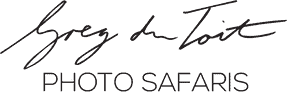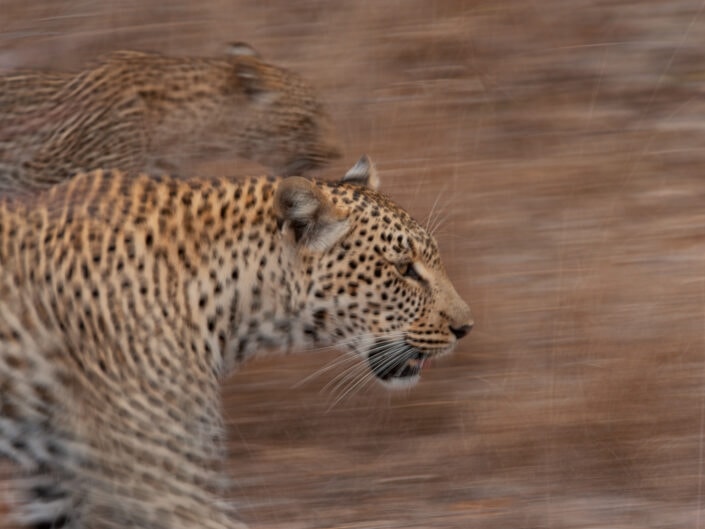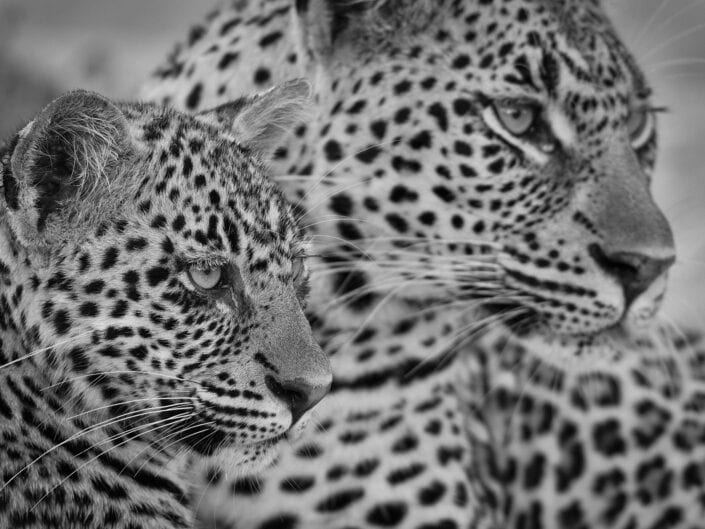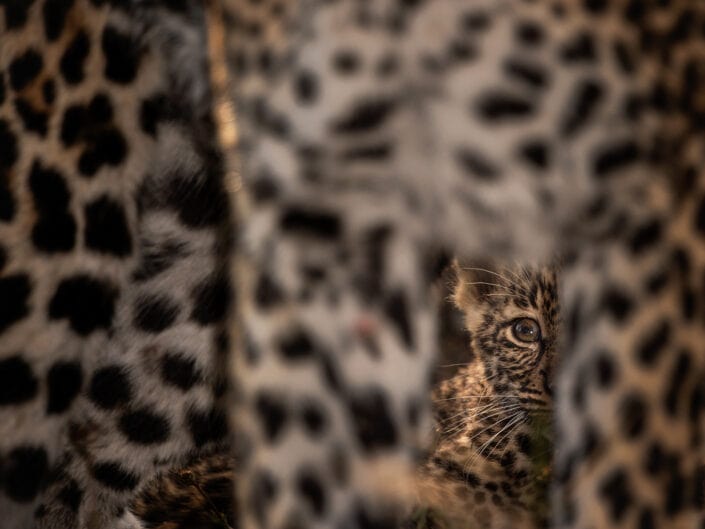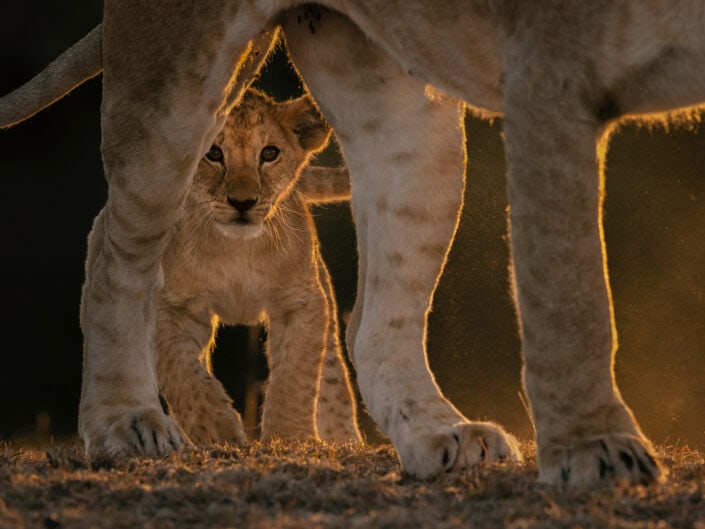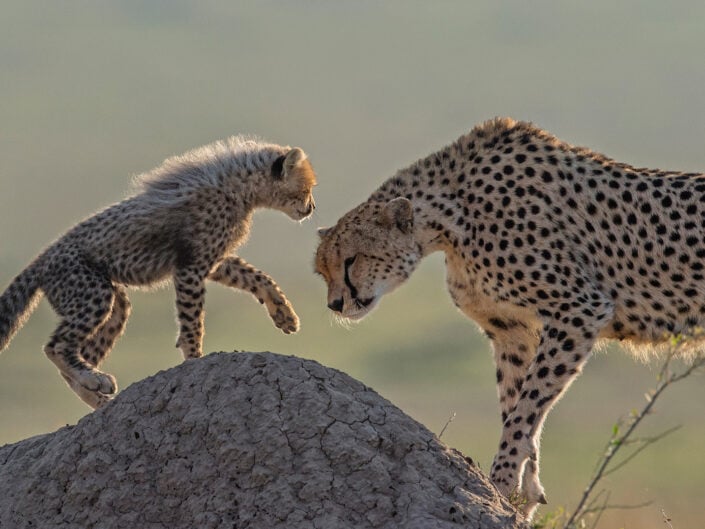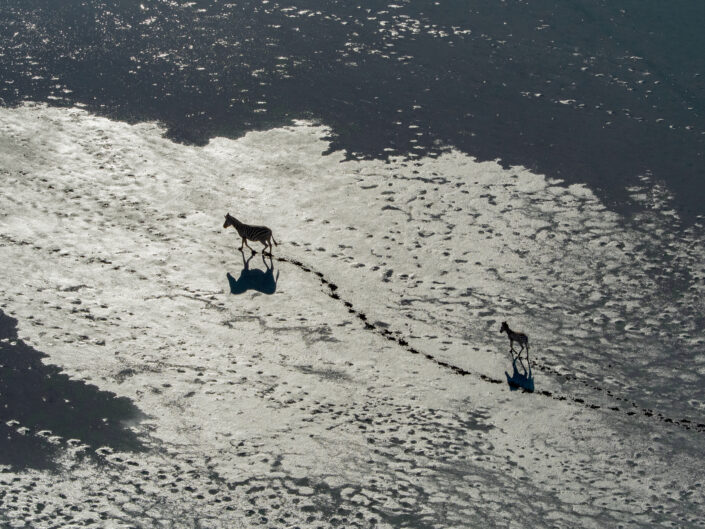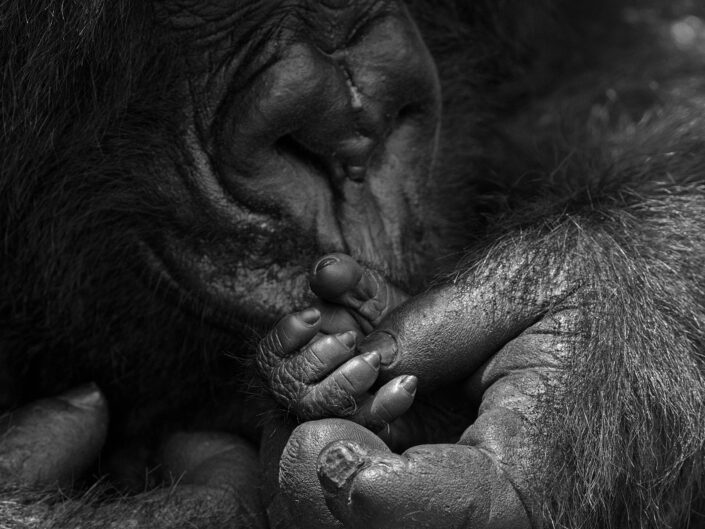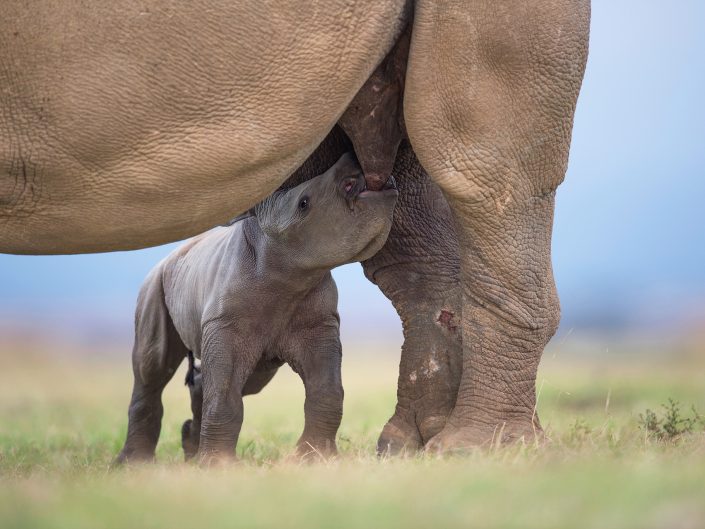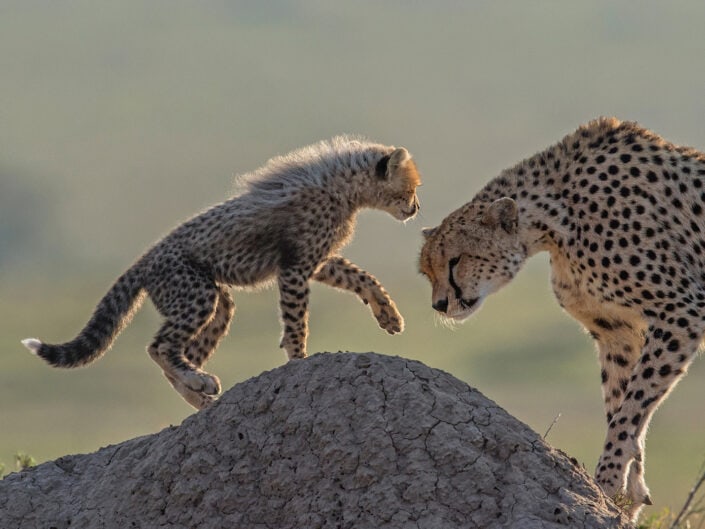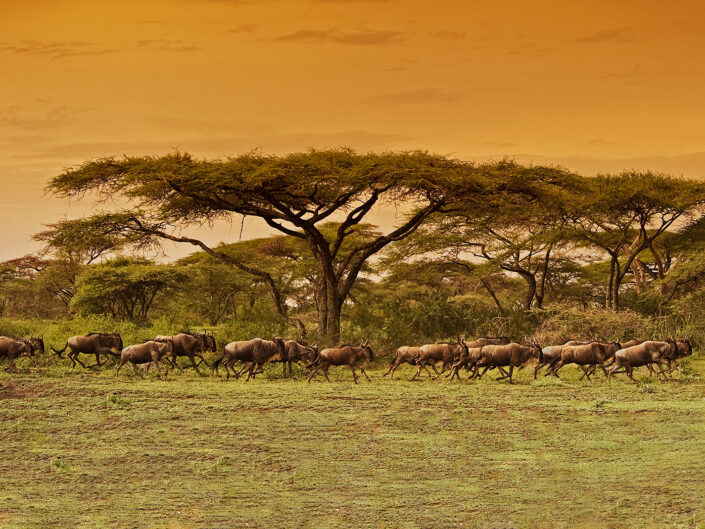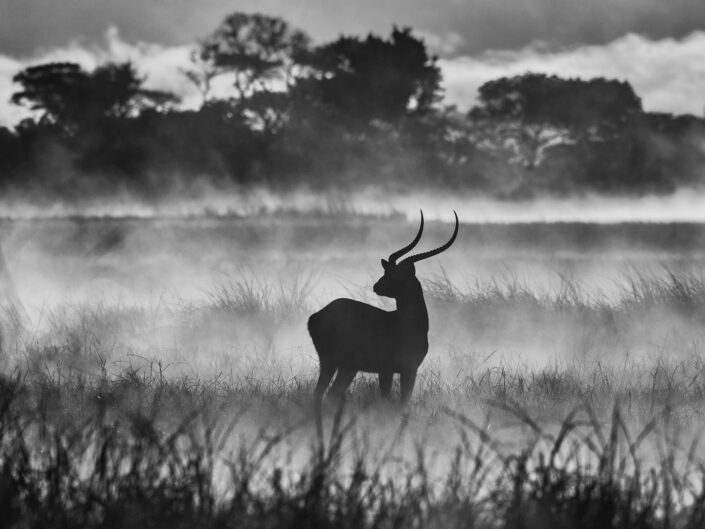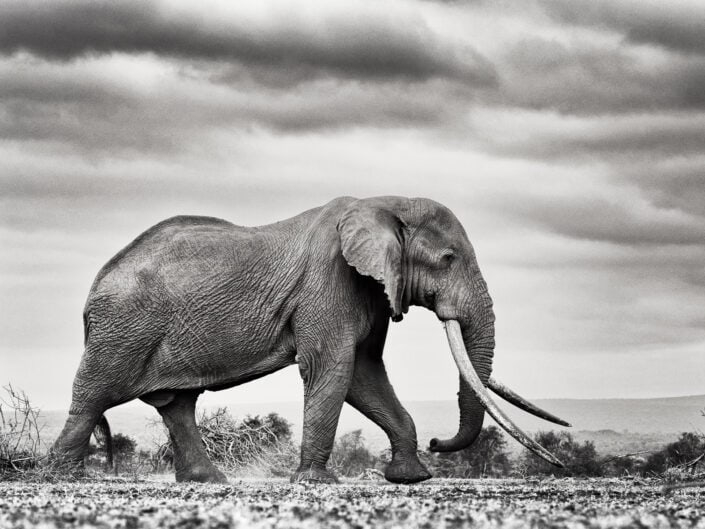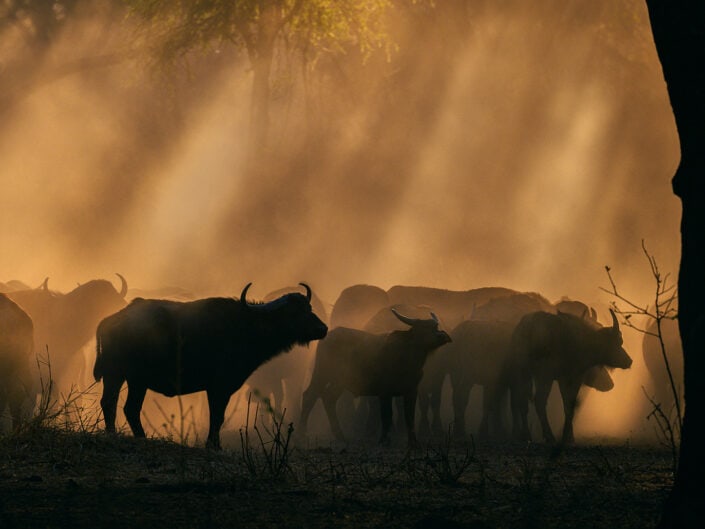African Photographic Safaris FAQ
See all AFRICA PHOTO SAFARIS AND WORKSHOPS complete with photo galleries, detailed itineraries and GUEST TESTIMONIALS.
Watch iPhone YouTube videos of my recent safaris.
What makes an African photographic safari different to any other?
A photographic safari is a safari specifically designed and executed with photographers in mind. This plays out in many different ways and the best African wildlife photography safaris are nuanced, keep reading for more.

Do you offer bespoke photographic safaris over and above the planned itinerary safaris advertised on your website?
Yes, I certainly do but I do not display my bespoke private safari itineraries as each is by nature custom-designed. However, remember that any of my planned safari itineraries can be booked privately. Also take a look at this Ngorongoro Crater and Serengeti Safari itinerary. The Leopards Of Londolozi itinerary is often booked privately and you can extend your stay in Southern Africa.

If you wanting a truly bespoke photographic safari experience, then on my ‘Bespoke Best Of Africa‘ pages I share with you my thoughts on each country, and I include a gallery from each. If you would like to travel alone or with a friend, spouse or your own group, I can arrange a private safari just for you. In this case we will tailor a custom itinerary. The date of travel will depend on when you prefer to travel (like in your winter!) or which country you would like to travel in and of course what animals you would like to photograph. Let me know the answer to any of these questions and I will recommend a safari itinerary for you.
Who do you typically take on your photo safaris?
The short answer to this is that I take anyone with a love for Africa and a passion for photography. I have some serious photographers that solicit my services to lead them on bespoke private safaris to take their portfolios to the next level. I also have photographers who, like me, just love Africa and love being out in the wild photographing. These photographers join me on photographic safaris to experience real Africa and we have a good mixture of fun (see my Youtube channel loaded with Africa photo safari videos) and adventure, combined with incredible wildlife sightings and photography. I cater for all levels of photographers from beginners to professionals and non-photographing partners are not only welcome, but they really enjoy the experience too. Read a few guest testimonials.

How would I go about booking a private photographic safari?
Fill out my contact page and let me know what time of year you like to travel. I will then recommend a country and specific locations to visit. Alternatively you can tell me which country, locations or animals you are interested in so that I can then recommend the best time of year. For some suggestions, see my bespoke African photography safari page and view my already planned itineraries.

When you email me also kindly give me an outline of your expectations in terms of the accommodation. Are you wanting a luxury lodge experience or perhaps a comfortable canvas experience, or a more basic traditional mobile camp. The more you tell me about your expectations, the better I can tailor your private photographic safari. If all you care about is excellent photographic opportunities, you can leave the accommodation to me as there is often only one place to stay that allows the best access to the wildlife (more on this later). I will use my intimate knowledge of the continent, its camps/lodges and its wildlife, to make suitable recommendations. One vital bit of information that I will need to know in order to compile your private photographic safari itinerary, is whether you are traveling on your own or with a partner, or in a group? This affects charter flight costs as well as the cost of securing an exclusive safari truck. Once we agree on a basic outline for your private photographic safari, you will receive a fully customised itinerary and cost.
What do your private photographic safaris cost?
A ‘Bespoke Best Of‘ private photographic safari costs in the region of US$60 000 – US$80 000 for a single photographer traveling on their own. A private photo safari of this nature is all inclusive from the time you land in Africa until the time you leave, and includes only the best camps, best private concessions, best wildlife, easiest travel (often by private charter) and the ultimate in photographic opportunities (often with photographic hides and helicopters employed to give unique perspectives). These bespoke photo safaris are usually 10-14 days long and include three or four different locations, each offering you a real Africa experience combined with incredible wildlife photography. If you are traveling with another photographer or non-photographing partner, the same itinerary will cost in the region of US$35 000 – $45 000 per person. If you traveling in a group of 3 or more, then the same itinerary will cost less. The bigger your traveling group the less the cost because charter flights, exclusive safari truck fees etc. all get shared.
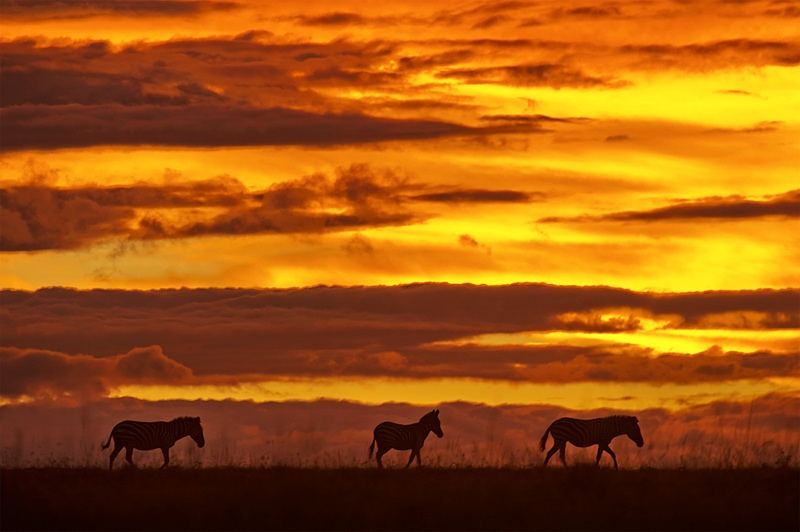
What if I cannot afford such an expensive trip?
You can always trim down the safari. For example, you can visit one or two locations instead of three or four. See my planned safari page for itineraries of this nature. These safaris usually cost around US$25 000 per person. Also, a very effective way to reduce cost is to travel outside of the main tourist window. This especially applies in the Okavango Delta where a green season safari is far more cost effective. See this Okavango Delta photo safari itinerary and get in touch to book the green season option from Nov-April.
What if I am a single traveler and cannot afford such an expensive trip?
If you are a single traveler and you take your photography seriously but find the cost too high, then a very feasible solution is to book a safari that is targeted on one particular place or species. This way the safari becomes shorter, more focused and costs less. You can then do a series of these safaris over a number of years and build a really strong Africa portfolio. For example you could go to the Ngorongoro Crater, and with my recipe, build a superb portfolio in just a few days (see this Africa’s Eden gallery). Or you could join me in my home country of South Africa photographing leopards and after just five nights you can have a leopard portfolio. These shorter more focused private photo safaris usually last one week and include an overnight stop at the beginning. I have the necessary skills and experience in Africa to deliver, in one week, a yield of photographs that would usually take a number of weeks to get. See this list of East Africa photo safari ideas and this page for Southern Africa photo safari options. Get in touch now and let’s make your private Africa photo safari a reality.

* You can also extend your safari and carry on without me as your guide. The really good news is that my agent can arrange all this for you, including both the guided segment and the unguided segment of your safari.
What if my budget is much smaller than the figures mentioned above?
In this case I have some good news for you because I am busy designing a new safari product in my home country of South Africa that caters just for photographers like you. Please get in touch and ask me to add you to my newsletter so that you can be notified as soon as it launches. For now it remains a big safari secret.
I see that you call your custom private photographic safaris the ‘Bespoke Best Of’. Can you shed light on these?
The ‘Bespoke Best Of’ concept has proven to be a wonderfully effective way of offering private photographic safaris. What I have found over the years is that photographers who sign up for private safaris are the kind who return to Africa more than once. So, instead of flitting about from one iconic destination to another, I designed the ‘Bespoke Best Of’ safari concept. What this means is that you knock off one safari country at a time. The advantage of this is that you will get to enjoy and photograph the iconic destinations in that country but you will also photograph the off-the-beaten-track locations. If you think about it, if you only go on private photographic safaris to iconic destinations, these are the places every other photographer goes and so you might land up getting shots like everyone else.

My ‘Bespoke Best Of’ private photographic safaris are usually longer, taking place across four different locations, and if you stick to the ‘Bespoke Best Of’ plan, you will get the best results from each country, and from the continent as a whole. I have designed incredible ‘Bespoke Best Of’ safari itineraries for almost every country. You can read about these and see a gallery from each on this bespoke African photography safari page. There is a contact form at the bottom of each page, so get in touch once you have decided which country you would like to make your ‘Bespoke Best Of’ choice for your private photographic safari.
Why do you currently only sell a handful of different trips for the whole of Africa?
Having lead countless safaris across the African continent and hosted dozens upon dozens of photographers from different countries and backgrounds, each with their own level of experience and photographic aspirations, one thing I have come to realise is what photographers want on an African photographic safari. In short, photographers want photographs! But not just any photographs, they want awesome photographs. In order for me to be able to guarantee my photographers awesome imagery, there are very special criteria that need to be met on each of my African photographic safaris. Let me list just a few of them:
1. There simply needs to be a plethora of wildlife and this immediately excludes most ecosystems from being placed on a ‘best African photo safari’ itinerary.
2. Secondly, you need to be based in a camp or lodge that allows quick and easy access to photographic opportunities because, remember, it is all about the light. The location of most safari camps actually excludes them from being placed on my itineraries.
3. We need freedom to be able to drive off-road as much as possible and this excludes many parks and reserves from being used for my African photographic safaris.
4. We need to avoid other vehicles so that we can change positions and work particular angles during a wildlife sighting. Low tourist volumes are a critical element of the best African wildlife photography safaris.
5. You ultimately want to photograph wildlife action and interaction. This means that many of the remoter quieter destinations cannot be included on my African photographic safaris.

6. If you are traveling all the way to Africa on an African photographic safari, you want to leave with dynamic photographs of all the predators and big game. This means that we need to be able to not only find these creatures, but as photographers, we also need to get close to them. It does not help seeing a serval a mile away. This again excludes many locations from being included.
7. Being in the right area is not enough, the best time to go on safari is also critical. The best African wildlife photography safaris always take the weather and tourist seasons into account. It is not a case of just going anywhere at any time of year.
8. The vehicles and driver guides at each camp are both essential components of a successful African photographic safari and these all important factors need to be carefully factored in when considering what is the best African photographic safari to do. For example, on this Africa photo safari only open vehicles are used and with no roofs or poles to obstruct photography, and freedom to stay out after dark, you can photograph leopards in trees and at night.
9. As wildlife photographers, we do not want to photograph in contrived circumstances. We want to photograph in Africa’s largest ecosystems where the animals roam wild and free. This criteria excludes the smaller and more ‘canned’ wildlife locations from making it onto a ‘best African wildlife photography safari’ itinerary. If you want to experience real Africa, you need to go to real Africa. I will take you there.
10. Photographers also do not want to shoot cliched imagery and as such we need freedom to explore and to seek out unique opportunities. We need to be able to venture off the beaten track, away from other tourists on your African photographic safari. You want to finish your safari with unique images that you can enter into the NHM Wildlife Photographer of the Year competition.

When you add all above points together, there are really only a handful of locations and camps to combine on the best African photo safaris. I have visited almost all Africa’s major safari locations and I have photographed them extensively (see www.gdtprints.com). At the end of the day, the African photographic safaris that I offer are the only ones that I feel will satisfy any and every kind of wildlife photographer.
Which African photographic safari is for me?
Each one of my listed safaris (see the drop down menus at the top of the page) are absolute ‘must do’ African photographic safaris and that is why I only list a handful. Each one is totally different to the next and they all offer you the best African photo safari experience. Don’t worry about which is the best country in Africa for a safari as they are all incredible. The best time to go on safari is much more important. The time of year is different for each of my African photographic safaris, so depending on when you plan on traveling, the below African photographic safari calendar can help you decide which safari to book:
Safari Calendar:
January: Masai Mara photo Safari for predators with a mountain gorilla trek or any of these exciting options to extend your stay in East Africa. This is also an excellent time of year for a green season predator photo safari.
February/March: A Bespoke Best Of Tanzania safari to experience the great migration calving in the Serengeti. Add a chimpanzee extension.
May: Best Serengeti photo safari (with the Ngorongoro Crater)
June: This Africa photo safari in the form of a predator workshop (include some meerkat photography) or a Zambia private photo safari which includes my Zambia Mood and Mists and Zambia Forest Secrets.
July: This Bespoke Kenya photo safari with a sublime underground hide and aerial flamingo photography. Or this Zambia Forest Secrets. Both safaris offer the signature ‘real Africa’ experience.
August- Sep: These are the prime months for a private African photography safari to any country including a private Namibia wildlife photo safari (with the Hoanib Skeleton Coast). It is also a great time of year to book a Botswana private photo safari when the flood has arrived in the Okavango Delta. These are the months in Africa when you can go anywhere, so if you have a specific country you have always wanted to visit then this is the time. If you love baobabs and want to photograph one of Africa’s most beautiful, wild and remote parks, look no further than my Wild Ruaha Photo Safari.
October: This is a hot month in Africa and a good time for an air-conditioned luxury African photo safari to South Africa.
Nov – early Dec: This is a great time for a private African photography safari to Kenya with all the wonderful Kenya extensions on offer plus a mountain gorilla photo safari. It is also an awesome time for my Masai Mara photo safari and for a luxury green season predator safari in South Africa or the Okavango Delta. It is also an excellent time for a Tanzania photo safari to photograph the great migration and predators in the Serengeti.
Late December is not advisable as Africa is full of tourists.
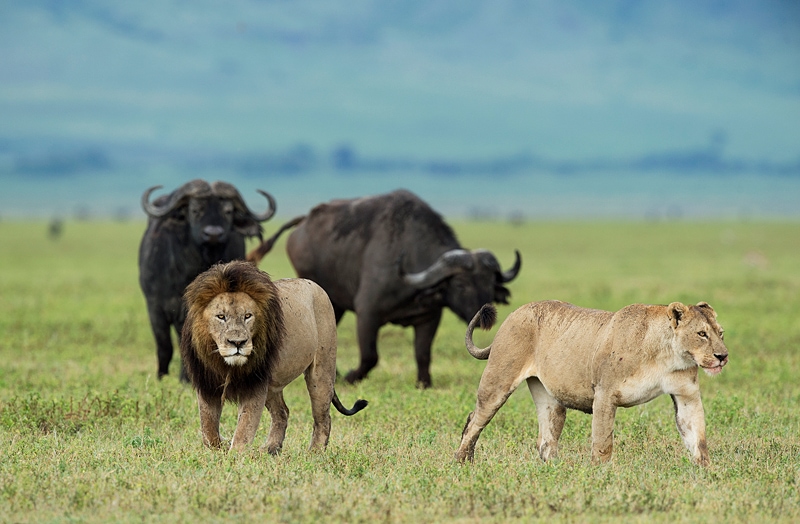
Beyond the above, I am afraid I cannot make the decision for you. I have however included as much information as possible, along with galleries and itineraries for my bespoke Africa photo safaris to help you as much as possible. You can also read the ‘Why this is the safari for you’ segment at the bottom of each of my planned safari pages. After living in Africa my entire life and working as a safari guide, then as a safari camp manager (read all about it in my memoir) and now as a professional wildlife photographer for the past 25 years, I have narrowed all my experiences down to just a handful of African photographic safaris. Each one is incredible and if you find it a bit of an information overload, simply tell me what time of year you like to travel and I will make a recommendation. Get in touch now to book your African photographic safari.
Ok, I am sold. How does the booking process work for one of your African photographic safaris?
You simply complete the booking enquiry form that every safari page on my website has. You will find it at the bottom of each page. Alternatively, you can reach me through my contact page. I will then reply to your email and introduce you to my agent who will handle all the paperwork for the safari and who will send you an itinerary link and pdf. If you accept, a booking form will follow and you will be requested to pay a deposit (all terms and conditions will be included). Then when you land in Africa, I will be there to greet you personally and from that point on I will be your host, guide and photographic tutor until the very end of your African photographic safari.
Um, so you don’t actually book the safari but you work through an agent. Why?
As a working professional wildlife photographer I am out the office more than I am in the office and in order for me to offer you a truly professional service, I have chosen to work with an agent for all my African photographic safaris. This agent (Kaitlyn is her name) acts as a ground-handler making your travel experience seamless. Both are highly specialised companies that cater for the best Africa photo safaris. By me using an agent, you can still benefit by having a working professional wildlife photographer (African-born) design your itinerary and be your safari guide, but you need not endure a substandard booking experience and please believe me, my administrative skills are substandard.

If you go through an agent does this not hike the cost of your African photographic safaris?
Working through my agent does not add to the cost of your safari because the agent I use does not add a fee on top of what the safari camps charge you. The agent rather collects a commission from the camps/lodges. It is standard practice that safari camps will offer agents between 10-30% commission on bookings and this is where the agents collect their revenue. This means that you are paying the same rate per person per night at a safari camp or lodge that you would even if you booked the African photographic safari yourself.

Depending on the complexity of your itinerary my agent might choose to charge a flat administration fee for handling the booking and logistics of your safari. This is a once off fee for your entire safari. For this administration fee you get all the logistics taken care of, including the booking of all internal transfers, flights with special luggage allowances, private vehicles and meet and greet services. You also get peace of mind which allows you to relax and enjoy your African photographic safari knowing everything is taken care of and should something go wrong, you have a ‘go to person’ on the ground in Africa. The agent then builds my travel costs into the overall cost of your safari and I am booked into the camps as a pilot/guide, which means I get charged a fraction of the full tourist rate.
What happens if you get sick and are unable to lead the safari?
Good question and the relieving factor is that in the last 15 plus years of safari guiding I have never missed a trip. In the event that I cannot make the trip due to extreme emergency, death or illness, I personally charge you nothing. If I get ill and cannot make the trip, I will work with my agent and camps to try postpone but failing this to find you a suitable replacement as a photographic guide. If however you choose to cancel the trip, then the various camps that we use have cancellation policies that will be applied. These are not my policies, they come direct from the safari operators and camps. Usually there is a sliding scale and you will receive all these details when you book. I can assure you that I plan on being there for your safari. I also advise all of my safari guests to take out trip insurance and you can purchase a ‘cancel for any reason policy ‘ which would cover you if you wanted to cancel. My agent can help guide you with this, together with medical insurance advice, when you book.
Besides the itinerary planning, how can I benefit by having you as my guide
Photography is as much about positioning and light as it is about cameras and gear. On your safari, I will position you so that you are able to maximise every photographic opportunity that comes your way. I only guide and photograph in Africa and as such I am a true African wildlife specialist. Knowing how animals behave is essential to being positioned correctly and I will work with the safari truck driver on your safari to position you correctly. I also travel with an entire workshop on my laptop and during the trip I will monitor your progress and can present topics that will take your imagery to the next level. I can address any problem areas that you might have plus give you feedback on your own images. This is all done in a relaxed manner and I find that a good time to meet is before the afternoon safari drive. I like to give you a masterclass on autofocus early on, to make sure that we iron out any major problems, so that you can be sure to capture great images from the start of your African photographic safari.

By the end I will have taught you everything you need to know to take images like a professional wildlife photographer. While on safari drive I will share my settings with you but I will not at any stage force you to shoot the way I do. With me as your private photo safari guide, I will take you to the exact places I have been as a professional African wildlife photographer and we will use the same modus operandi that I use to get my imagery. See my wildlife print galleries.
Let’s take a photographic break… FAQs continue below…
In case you still have questions let’s continue…
What makes a Greg du Toit African photographic safari different?
First and foremost, I am from Africa. Not only was I born in Africa but my family has been here for 11 generations. Africa is my home and when you travel with me, you are a guest in my home. I delight in showing and sharing my home with you on my African photographic safaris and each is a personalised and hospitable experience. As we say in Swahili, ‘karibu sana’ which means ‘you are very welcome’!
Secondly, not only have I been in Africa my entire life but I have been working permanently in the African safari industry since 1996 when I was 18 years old. I started out as a walking safari guide before meeting my wife, Claire. We then teamed up to manage safari camps in South Africa, Botswana, Kenya and Tanzania (read all about it in my book Wilderness Dreaming). During this time I gleaned valuable insight into geographic locations and safari camps, which I have used to design the best African wildlife photography safaris.
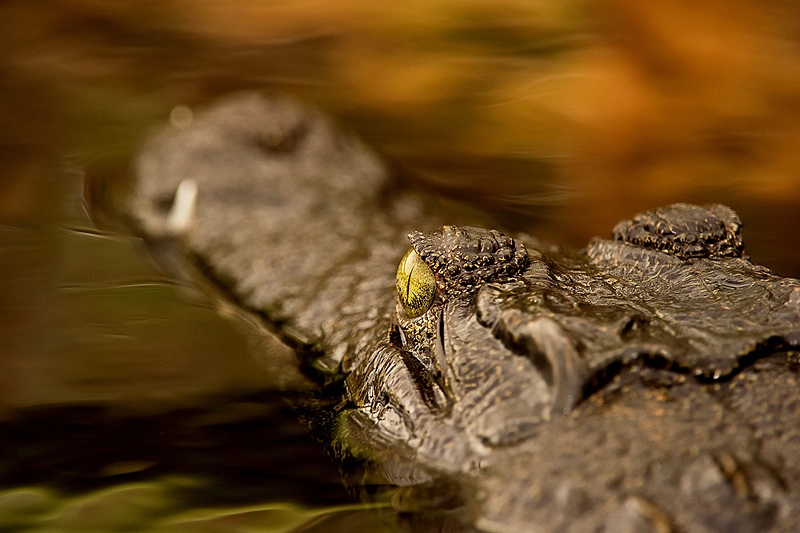
Thirdly, all my African photographic safari itineraries are designed by myself personally, and specifically with photographers in mind. But, and this is where I like to think I differentiate from the competition, my aim is to place my clients in locations and positions where they are able to capture unique images as apposed to cliche-type shots. To do this I visit different locations, or the same locations but at different times. As a result of this I only sell a small handful of the best African photo safaris and each promises to place you in the very best locations on the continent for wildlife photography and at exact times, so that you can create unique and powerful imagery.
I am intrigued, elaborate?
– My African photographic safaris visit both off-the-beaten track as well as iconic photography destinations in Africa, but always at the optimum time of year for creative photography. This knowledge has been collected over many years working as a professional wildlife photographer. I have a deep understanding of when and where to visit the right locations on African photographic safaris to get unique imagery. See my wildlife prints galleries.
– For my African photographic safaris I only use safari camps that are located in the heart of the wildlife action so that we can maximise the golden hours. This is an all too often neglected point and you will be surprised how many safari camps are not located in the heart of the action.

– On my African photographic safaris you will have exclusive use of a vehicle. My small group Africa photo safaris have only 3 photographers and only one safari truck, so you get an entire row to yourself. You can place your spare cameras and gear next to you, and you can shoot out the left and the right.
– As far as possible I try to place you in locations that allow off-road driving because freedom and flexibility are key to creating powerful imagery. After years of African photographic safari travel, I have learnt where off-road driving is allowed or tolerated.
– My African photographic safaris take you to the exact locations that I travel to as a professional wildlife photographer.
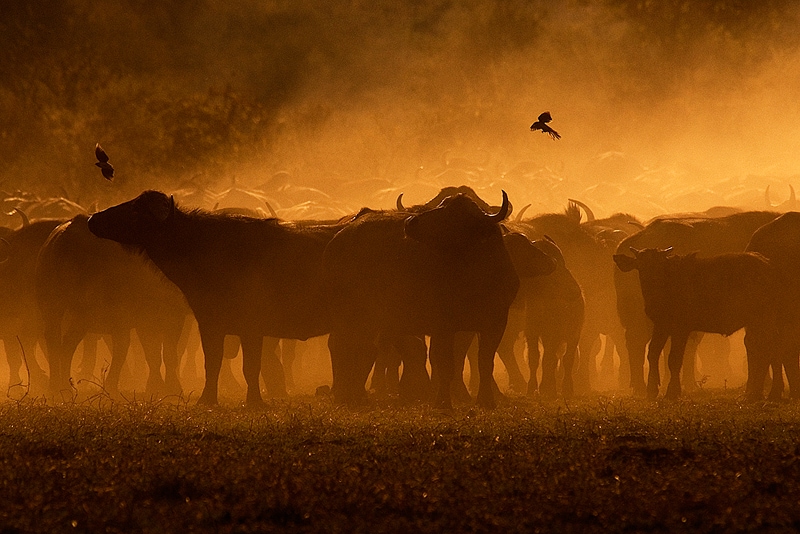
– When on an African photographic safari I place you in positions where you can shoot the same type of wildlife imagery that I do. See my GDT signature collection of African wildlife fine art photography to get a feel for my style.
– The African photographic safaris I offer, I have been on many times before in my personal capacity and I am not using these safaris as a tool to travel to see new places.
– As a professional photographer I am totally willing to share my knowledge with you and since we are in my backyard, I am not competing with you, I am sharing with you. I want you to finish your African photographic safari with exceptional images.
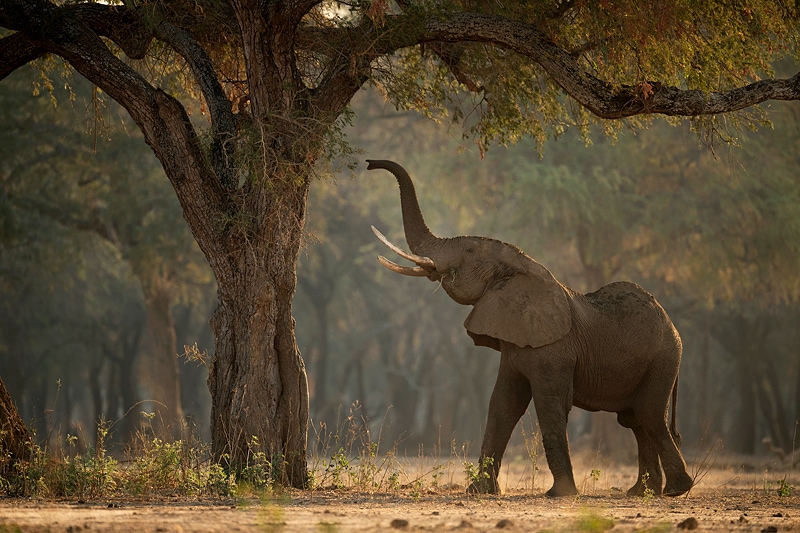
– The secret to my photography is that I get it right in the field and in the camera. I read light and animal behaviour to achieve results straight out the camera. This is my philosophy and believe it or not, it is a different approach, especially in a world where photographers are shooting on as many auto settings as possible and then focusing most of their attention on post processing techniques in front of the computer. My ability to achieve my results in the camera is what won me the Wildlife Photographer of the Year where you have to submit your RAW files. My second published book is even titled ‘Getting It Right In Camera’.
– While photography is the focus of my African photographic safaris, I believe that you need to enjoy just being out there. My ultimate goal besides making sure that you finish your trip with wonderful images, is to make sure you get to experience real Africa. All the best African wildlife photography safaris should do this and as such I always avoid the crowds and lead safaris in wilderness areas.
– Being a photographer myself I understand what a critical issue both the safari truck and space are on any African photographic safari. This is why I limit each small group photo safari to just 3 photographers on the truck (unless you book a private safari of course which means you are the only photographer) and why I use open safari trucks where possible.
– I keep my African photographic safaris small and limited to just one safari truck. You receive one-on-one tuition. I don’t run big groups where you get bounced around from one photographer to the next.
– I understand that photographers want unique shots and I have learnt over the years to visit various ecosystems outside of the conventional times of year. Not only does this mean you can avoid traffic but you also avoid getting conventional photographic results. I have the intimate knowledge that is required to do this and only the best African photo safaris take you to iconic destinations at different times to the rest.

Do you take photographs on your African photographic safaris?
Yes I do and that is because I love photography. I have reached a point in my career where it is extremely difficult to obtain unique imagery for my African portfolio. I aim for just 6 new images a year for my portfolio. Despite this, I always have my camera handy as one just never knows when a great shot will turn up on an African photographic safari.

On your African photographic safari I will sit in the passenger seat of the safari truck where I work closely with the local driver guide to ensure that you are in the right position for each shoot, so that you are be able to capture unique behavioural opportunities and make the best use of the available light. By sitting next to the driver I use my experience of animal behaviour to make sure we move ahead of the action and that we are properly positioned.
Photographing for me is like breathing and something I do every day. Even if I am photographing you are free to ask me any questions that you have and while I shoot I will call out my camera settings for you. If you get stuck, I will of course put my camera down to help you. I believe that through me photographing, you benefit more from my skills as a professional wildlife photographer because while I photograph I share with you my thoughts. I can also more effectively caution you regarding potential issues around exposure, depth of field, shutter speed, composition and focusing.

So you sit in front, is that not the best seat?
No, the front passenger seat has a good angle and that is the only advantage. Sitting in front you are unable to shoot out of the right side at all because the driver is in your way. Shooting out the front is also difficult due to aerials, tracker seats, mirrors, rifles and windshields. When sitting in the front there is also only room for one big lens and you cannot have your camera bag handy.
But by sitting in front I am able to direct the driver quickly and easily, which benefits your photography. To get the ultimate shot on an African photographic safari you need to quickly assess a scene and move ahead of the action. If I sit on the back I need to shout to the driver whereas next to him I can often just gesture with my hands. Sitting in front I can also hear the radio and liaise with the guide regarding how to rotate into sightings so that we get to the action in the best possible light. Having worked as a guide I know the tricks of the trade but I need to sit in front to execute them.

Obtaining award winning wildlife imagery entails far more than just having the correct camera settings. Knowledge of how wild animals behave and being positioned correctly are both of vital importance. I have the necessary wildlife and photographic experience to put you in the right place at the right time as often as possible, but to do this I sit in front so that I can direct the driver easily and quickly. Time is of the essence when working with wild animals and sitting in front I will make sure that the vehicle is optimally positioned to give you the best chance of getting that award winning shot on your African photographic safari.
The best scheduled African photo safaris only have 3 photographers per vehicle so that you can shoot out the left and right. If you would prefer a lower angle, then simply shoot off a beanbag placed on the seat next to you. I run my safaris in remoter places with less vehicle traffic and whenever possible I will allow you to jump out of the truck and shoot from the ground (although this is not something I should advertise so please keep it our little secret).

If I book a private safari, can I sit in the front seat?
Absolutely yes, if you prefer the front seat then by all means sit there. Please do mention this when booking so that I am aware of it. I will then sit behind you in the truck.
Ok, so where do I sit if I don’t book a private safari?
For my Botswana and South Africa predator workshop I only have 3 photographers and what we do is each photographer sits on the left-hand side of the vehicle. This way I can line you all up easily and quickly. Having your own row means you can also shoot out the right as there will be times when it is impossible to position the left-hand side of the truck to face the action. To keep it fair we change seats for every safari drive and by moving one seat forward each time, you will get to shoot in each seat. When you get to the front, you then start at the back again. This way no one feels like they are always in the worst seat on their African photographic safari.

Please note that on the Mashatu photo safari leg there is a tracker who sits on the back of the safari truck. This tracker helps us find photographic subjects and also directs the driver. When sitting in the back row, you will share that row with the tracker but this need not be a disadvantage as the tracker will always duck out of your way if you are shooting out the right-side. You can also get him to hold your spare camera and lens. If you do not want the tracker to join us then please specify this to me before booking. In Londolozi the tracker sits on the front of the bonnet and in big cat sightings will climb on the back but he will not be a hindrance. Other listed safari locations do not have trackers but if its a concern then please check in with me when booking your African photographic safari.
If you bring a non-photographing spouse along on the predator workshop then you two will need to share a row so as not to hinder the other photographers. If you a photographer concerned about non photographing partners joining then please specify this when booking so that we can make sure you on a workshop with no non-photographing spouses. Most photographers travel alone or both shoot if they are a couple, and therefore each is booked as a photographer – meaning that they have there own row. Non-photographing spouses are therefore rarely an issue.

If you, for medical reasons, have to sit in a certain seat on your African photographic safari then you please need to book a private African photography safari.
Some photo guides sit in the back?
Every private photography guide has their own recipe. Mine is to only have 3 photographers on a safari truck at most so that each photographer can shoot out of the left and right side. I sit in front where I am not only out of your way but I am able to effectively communicate with the driver guide. When I spot potential photographic opportunities, I help to quickly and effectively position the safari truck, ahead of the action and in the best position for the light. Don’t forget photography is all about the light. If you would prefer me to sit in the back with you on your safari, please just ask and I will gladly do so.

Tell me more about your African photographic safari recipe again?
My recipe, like many chefs, is simple. When you go on a photo safari with me, you are going with a professional African wildlife photographer and you will shoot like one too. We get out early and we stay out late for not just the golden light but for the blue hours too. On every safari drive our main objective is to get the best wildlife images possible. By always having your own row, with maximum freedom and flexibility to shoot out the left and the right, and having a seat open next to you to place your camera gear on, you have the best chance of getting that award winning shot. As your expert specialist guide I make critical decisions about animal behaviour and light as quickly and effectively as possible. I am also available for questions and I give camera setting recommendations. Back in camp I teach and help you with your camera settings and photographic concepts and principles. I travel with an entire workshop on my laptop computer. I am available and approachable. This is my recipe and I can say that it works. Please read my African photo safari reviews.
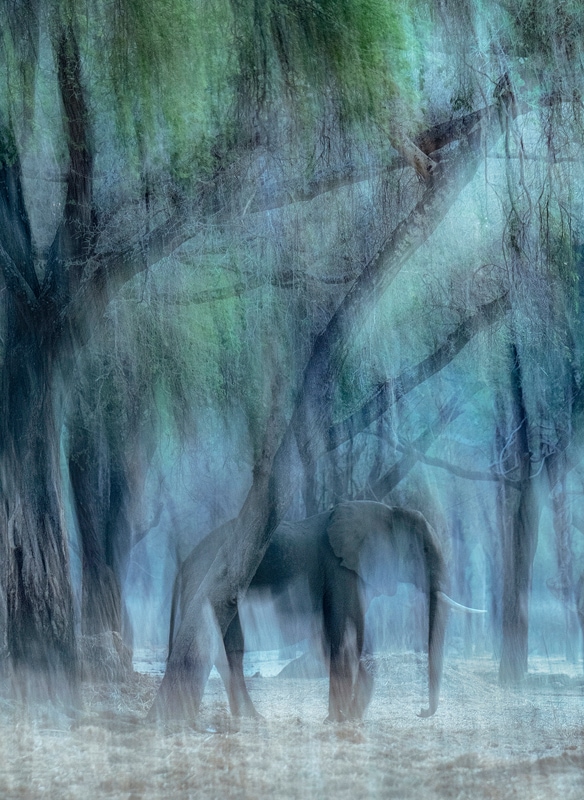
Have any of your safari clients won awards from photos they took on your African photographic safaris?
Yes, I am happy to say that my safari clients have won awards in various local and international competitions from shots that they have taken on safari with me. I have had one repeat photographer who started out as a beginner and went on to win the mammals category (which is the largest category) in the most prestigious Russian competition. Also, most notably, I had a young photographer I mentored who went on to win the junior Wildlife Photographer Of The Year.
Why are African photographic safaris so expensive?
Remember that at face value all safaris look the same but the best African wildlife photography safaris offer you the below and it all costs extra:
– On my photo safaris we fly to most of our destinations and we take the most direct route there so as not to waste shooting time. We often charter planes and land on private airstrips in remote parts of Africa that are close to the camps and also in the best wildlife areas.
– The best Africa photo safaris use camps that are located in the very best possible locations for photography, regardless of what they cost. When it comes to finding photographic subjects and in the best light, I make zero compromise. I book the closest camp or often times, the only camp that is there. Quite often, due to the spectacular and remote location, these camps are small and high end (costing upwards of $1500 per person per night sharing).
– If there are suitable camps but in different parts of the area, I will use more than just one camp so that we spread our chances. This especially applies to predators, which are territorial in nature so the more ground we cover the more predators we see. My Masai Mara photo safari and Okavango Delta photo safari are good examples of this.
– All the best African wildlife photography safaris make use of private wildlife concessions where possible. These are often in very remote locations that require enormous costs to run.
– Running small group photo safaris affects the overall cost of the safari dramatically and when considering a bespoke private African photography safari the number of people in your party will greatly affect the cost.
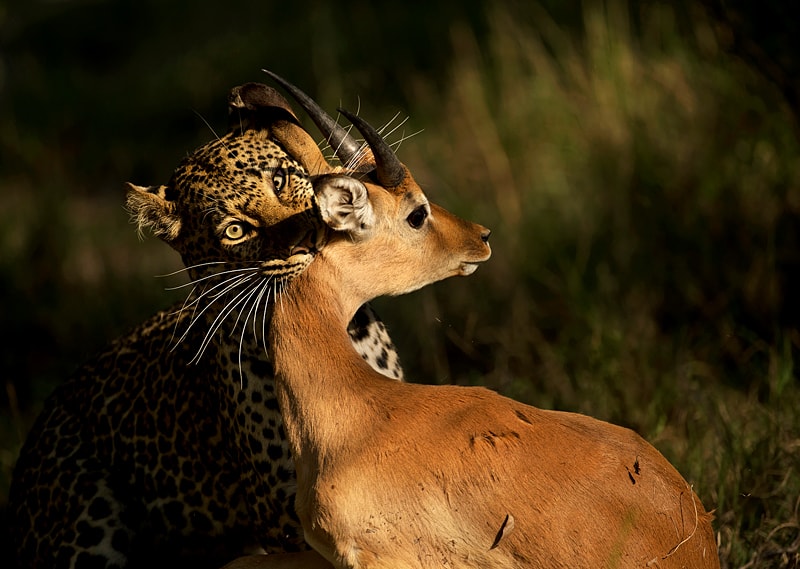
– The best African photo safaris are always inclusive with no hidden costs. From the time you land to the time you leave, you don’t need to pay for anything except personal gifts and gratuities that you feel you want to give.
– My African photographic safaris don’t just take you to the very best wildlife locations in Africa, they take you to the very best locations within these locations. For example, lots of safaris will take you to Amboseli National Park but when I take you to Amboseli National Park, I offer you photography in not one, but four exclusive private concessions as well as inside the national park. If you book a safari that costs less to Amboseli for example, you might land up in dust and traffic on a corrugated road, and you will be sharing sightings with mini-buses and not being able to drive off-road. This is just one example of countless I can give you but when you book with me, you have peace of mind that you are getting the very best Africa photo safari experience. See my ‘best Amboseli photo safari‘ and watch this YouTube video.
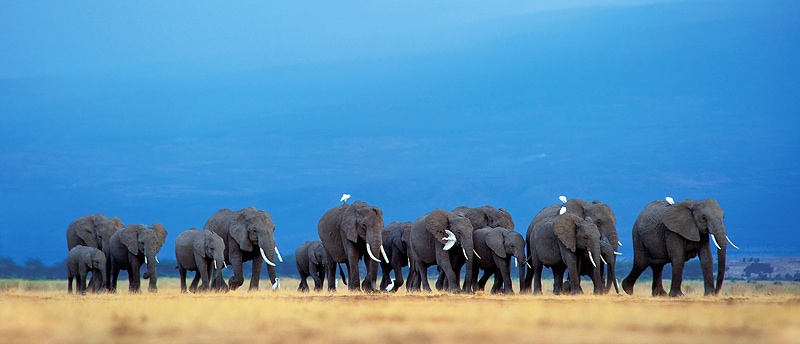
There seem to be lots of photo safari companies all over social media, surely they offer the above?
If you see a safari cost that is way below mine then you can be sure that it is not the best African wildlife photography safari, with all the criteria I listed in your previous question being met. There is just no way around these costs so it is very important that you compare apples with apples. For example, you cannot compare a safari that caters for 3 people to one that caters for 4 people. You also cannot compare the photo experience as having 4 photographers in a truck means you do not get your own row. Likewise, you cannot compare staying in a large hotel-type lodge to staying in a smaller more intimate camp. You also cannot compare staying in a camp that is 10 minutes from the wildlife action to a camp that is 40 minutes away. My African photographic safaris offer you peace of mind that no compromise has been taken and that you are getting the very best photographic results, and the very best African photo safari experience.

Are there any other pitfalls when booking a cheaper African photographic safari?
Yes there are, starting with the travel plans. Pay careful attention to how you getting to your locations as one easy way of cutting costs is to book larger airlines and to fly into major centres. Also check luggage weight restrictions as you don’t want to have to go through the stress of being overweight and you certainly don’t want to have to leave critical camera gear at home. The 2nd big thing is to check the vehicle situation carefully and how many other photographers are in the vehicle. The 3rd is to check who is leading the safari? Lots of safari guides are leaving their lodge jobs to become specialised photographic guides and they are simply using the industry to see places, and they are doing this on your dime. Find out who is leading the safari, how long have they been a specialist safari guide and how many times have they been to the locations you are visiting? Then most importantly, have a look at their photographic body of work. Most times they will not be able to teach you beyond their own style, so it is really important that you approve of their photographic style. Their body of work must include the kind of imagery that you aspire to shoot yourself but must also include work that will stretch you and broaden your personal photographic horizons. Please browse my wildlife photography galleries before booking with me.

What qualifies you to lead African photo safaris, everyone these days seems to be an expert?
Over the past 25 years I have spent thousands of hours in Africa photographing (read an interview here). You are quite correct that these days almost everyone seems to sell themselves as an Africa photo safari guide. Many people leading photo safaris are indeed experts, but they are expert marketers and social media gurus. I like to think that my photography is my foremost qualification to lead Africa photographic safaris and workshops. I do not digitally manipulate my work and all my subjects have been photographed in free and wild conditions. Here is a link to my Fine Art Wildlife Gallery and here is a link to a professional wildlife award in the Fine Art Photography Awards.
I was also a nature conservationist before I was a photographer and I have studied African wildlife and ecology in great detail. As a result, I am able to predict unique behaviour which is a skill not often highlighted in the African photographic safari industry. While lots of luck is involved, knowledge of animal behaviour also plays a major role. See a video of here captured on this Africa photo safari in the form of a predator workshop.
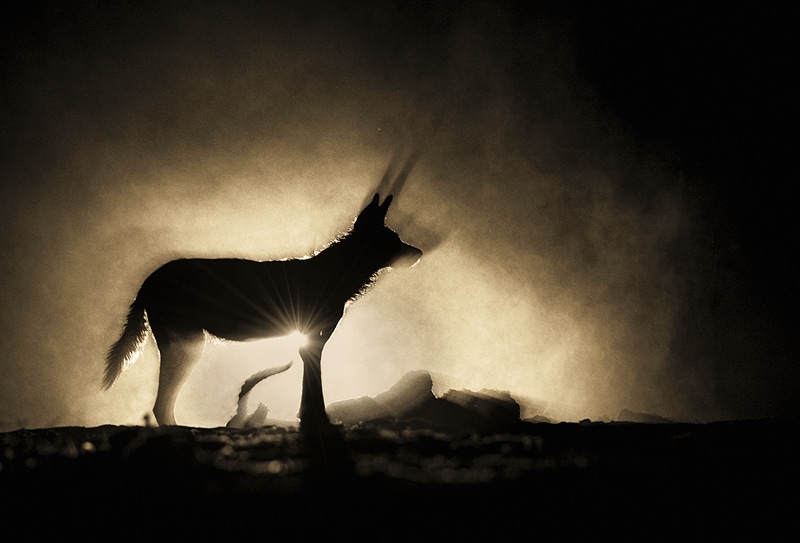
Having a photographic body of work and an intimate knowledge of Africa’s wildlife and ecosystems is not all that is needed for one to qualify to lead the African wildlife photography safaris. As a photographic safari guide you must be able to make this knowledge relatable. I am a people person and please read my guest testimonials to get a better feel of who I am.
All fine and well but are you a professional photographer?
Yes, my books have sold well and I run a limited edition fine art wildlife photography business. I have been commissioned by the National Geographic Channel as a photographer for the launch of their Great Migrations series in the Masai Mara and I have hosted a solo exhibition titled ‘Africa’ for the National Geographic gallery in London. I have also been commissioned by the BBC Wildlife Magazine and Geo Magazine to compile portfolios on African Leopards. You can see a small selection of my published work here and you can read my full bio here. I was awarded the most prestigious award in world wildlife photography when I was named the Wildlife Photographer of the Year 2013. I have placed a total of 7 times in the wildlife photographer of the year contest.
Do I need to be a semi-professional to do one of your African photographic safaris?
Not at all. I cater for everyone from beginners through to semi-professionals and professionals. I delight in taking your imagery to the next level, in getting you excited about your photography and sharing real Africa with you.

What about non photographing partners, friends and spouses? Can they join one of your African photographic safaris?
Yes, bring them along. Although I design my safaris for photographers, photographers like to photograph exceptional wildlife right? Well, non-photographers also want to see exceptional wildlife so there is no conflict of interests. The only catch is that if they want to join the morning safari drive, they will need to get up early (we depart half an hour before dawn). For the rest, the safari is similar to a non-photographic safari. Ok, there is another catch and this is that photographers like to spend longer than usual at sightings. Non-photographing partners will therefore also need a good dollop of patience. Often though, patience in the wild is equally rewarding for everyone.

Side note: I am not only a wildlife photographer, I am also a safari guide and qualified nature conservationist. Non-photographing partners will get the full safari experience as I share interesting facts and insights concerning Africa’s wildlife, people and ecosystems.
Ok, so non-photographing partners can join, but will they enjoy the safari experience?
Yes they will. I have years and years of experience as a safari guide and I will make sure that even non-photographing partners get the full safari experience. They will take in beautiful sights and they will share in an adventure of a lifetime. They will also learn interesting things about animals and about Africa in general. All the best African photo safaris take you to the most beautiful locations on the content and also offer an authentic safari experience. This is equally true for non-photographing partners. See this Masai Mara photo safari as an example.

What is the accommodation like on your African photographic safaris?
I use a mixture of lodges, luxury canvas safari camps, rustic bush camps and mobile camps. This Africa photo safari, this ‘best Serengeti photo safari‘ and the Leopards of Londolozi are all hosted in lodges with air conditioning and large spacious rooms. This Kenya photo safari and most of the extensions, including the ‘best Amboseli photo safari‘, and those on my private African photography safari page are hosted in luxury safari tents. It is perhaps incorrect to refer to these lodgings as ‘tents’, they are the size of large bedrooms with decked floors. Basically, unless you stipulate otherwise, you will stay in some degree of luxury. If you specifically wanting a rustic experience then let me know and this can always be arranged (especially on a Zimbabwe photo safari and a Zambia photo safari).

It is the new millennium, why the need for tents on an African photographic safari?
An African safari would not be a safari without a spirit of adventure now would it? A traditional safari involves penetrating the wilderness and then doing so in sure style. This is a tried and tested winning recipe, and I believe that one of the best ways to experience Africa is to do so under canvas. What better than lying inside your comfortable bed, all snug and warm, listening to lions roar or buffalo graze outside. For most of my safaris the tents are permanent structures and way more luxurious than most hotels, see this Okavango Delta photo safari. Sometimes I only use mobile camps that carry a lite eco-footprint and which are put in place just for us. An example of this is the 2nd camp we use on my Masai Mara photo safari. Having said this, in Africa we can cater for everyone, so if you only want to stay in lodges this can be arranged. On most of my ‘Bespoke Best Of‘ safaris I use a combination of different style accommodation, thereby offering you a feel for it all.

What if I do not like roughing it?
Then join me on safari. The camps I use have charm and you will be more than comfortable. Some of our lodgings are just outright luxurious and lavish (see this place). If however you are wanting only luxury then please sign up for my Ngorongoro Crater and Serengeti Safari or my Leopards Of Londolozi. If you want uber-luxurious then it is best to book a private African photography safari and specify this requirement so that we can make sure we only use the top lodges.
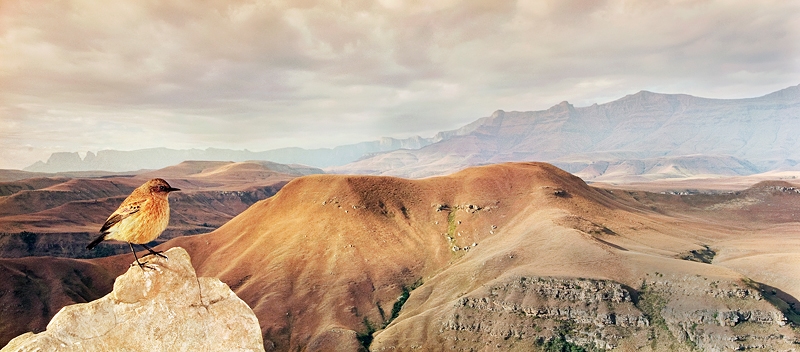
What if I want to rough it and experience a mobile safari
This can be arranged easily. A Kenya mobile safari is the finest way to do a safari because it is both rustic and luxurious but be warned, it is the most expensive way of doing a safari because they set up and move the entire camp just for us. If you want to go real rustic then a Mana Pools photographic safari or a Zambia private photo safari are the way to go. If you enjoy walking then a Ruaha photographic safari is the ultimate.
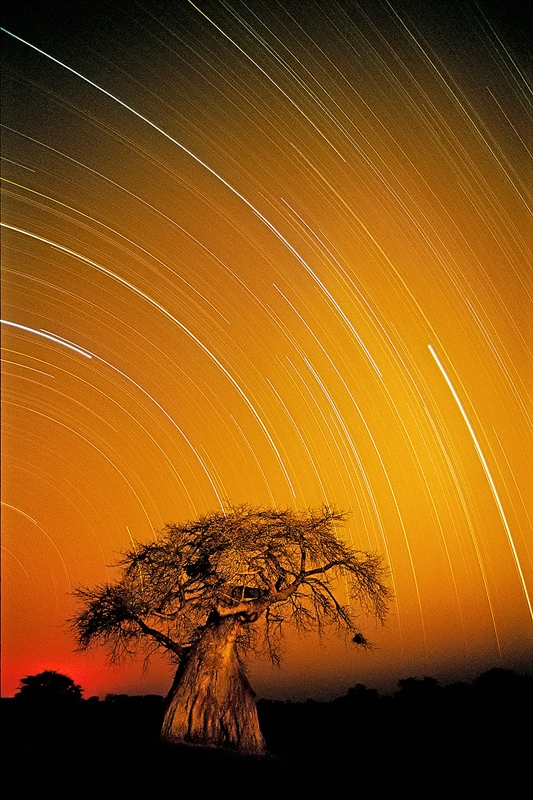
Browse through the safaris & workshops and make your booking directly from each page…
